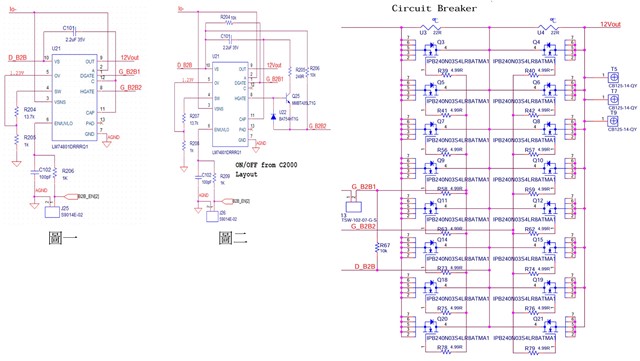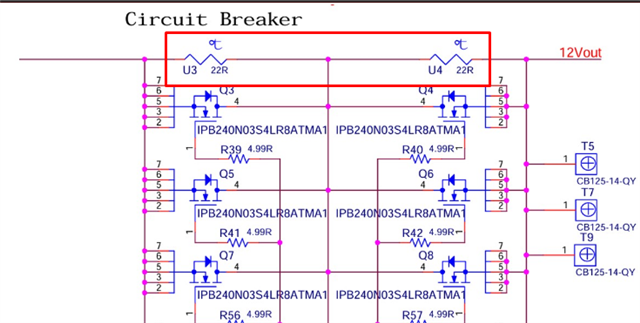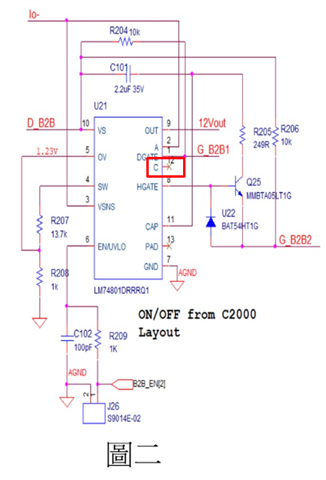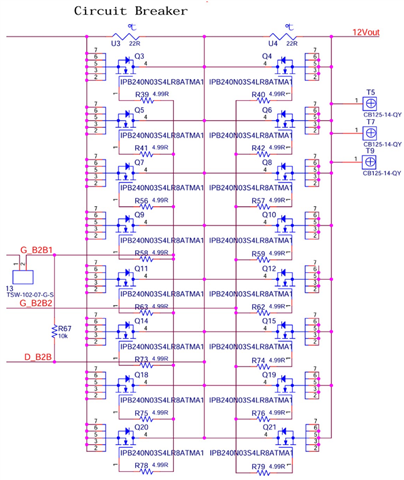
Hello:
I have a few questions:
This circuit is a 400V-12V 3.6kW (TIDA-020031-3.6kW-DC-DC) circuit diagram downloaded from a website.
1. If I want the LM74801 to drive 16 switches, should I use the circuit in Figure 1 or Figure 2?
2. What is the function of the NTCs in U3 and U4 in the circuit diagram? The NTCs don't provide a signal to the MCU for detection.
Thank you.



